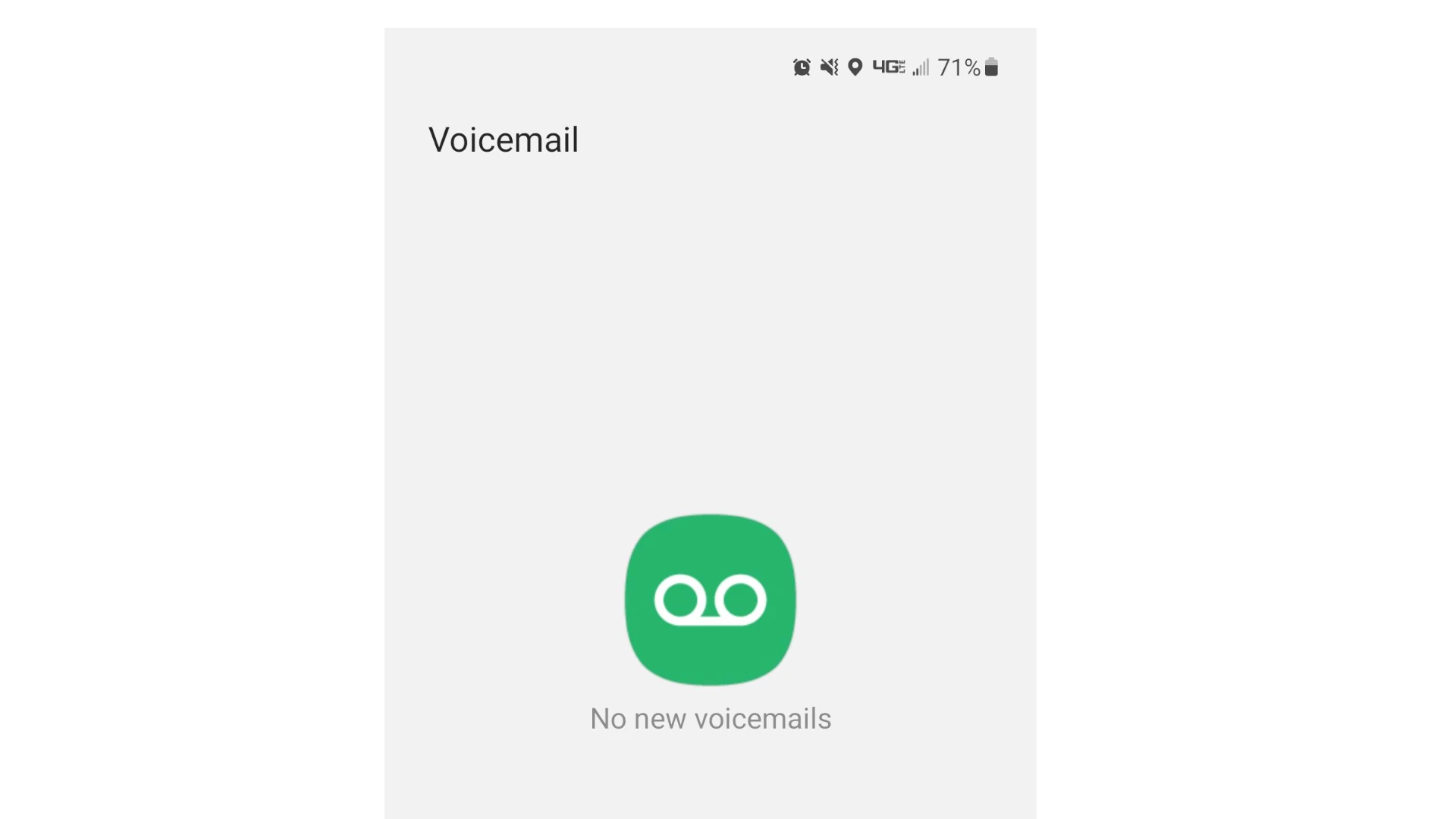
Ever wondered how many messages it takes before your phone starts rejecting new voicemails? It’s a common question many of us only think about when we get that dreaded “mailbox full” notification. The typical voicemail box can hold about 100 messages before reaching capacity, though this varies by carrier and phone model. Some iPhone users report a limit of around 40 messages regardless of length, while other mobile providers may set different limits based on your specific plan.
The storage capacity isn’t just about the number of messages but also their length. Most carriers limit each voicemail to between 3-10 minutes maximum. This means your mailbox might fill up faster if you receive lengthy messages. Carriers like Verizon offer different voicemail options with varying capacities and features, so your specific limit may depend on your current plan.
Checking your remaining voicemail capacity is usually simple through your phone’s voicemail settings. Regular maintenance by deleting old messages can prevent the inconvenience of missed calls going straight to a full mailbox. Remember that storage limits vary by provider, so contacting your specific carrier for exact information about your plan is always the most reliable approach.
Understanding Voicemail Storage Limits
Every phone carrier and voicemail system has a maximum capacity — both in the number of messages and message length. Once you reach that limit, callers will hear a message like:
“The mailbox is full and cannot accept new messages.”
When this happens, you’ll need to delete old messages or save them elsewhere before new ones can be recorded.
🔢 Typical Voicemail Capacity by Carrier
| Carrier / Service | Max Number of Messages | Max Message Length | Storage Duration |
|---|---|---|---|
| AT&T | 40 messages | 3 minutes each | 30 days |
| Verizon | 40 messages | 4 minutes each | 30 days |
| T-Mobile | 30 messages | 3 minutes each | 30 days |
| Xfinity Voice | 100 messages | 4 minutes each | 30 days (auto-delete after) |
| Google Voice | Unlimited (cloud-based) | 3 minutes each | Stored indefinitely |
| Community Phone | 100 messages | 10 minutes each | Until deleted |
| Spectrum Mobile | 40 messages | 3 minutes each | 30 days |
| U.S. Cellular | 30 messages | 3 minutes each | 30 days |
| Apple Visual Voicemail (depends on carrier) | Usually 40–100 messages | 3–4 minutes each | Depends on carrier policies |
(Sources: Asurion, Xfinity Support, Community Phone)
🧠 How to Check If Your Mailbox Is Almost Full
Most carriers will notify you when you’re nearing capacity:
- You’ll receive a text alert or automated voicemail warning.
- Some visual voicemail apps display a storage percentage (e.g., “90% full”).
- On Xfinity and other digital systems, an email alert may also be sent.
🧹 How to Free Up Space
- Delete old or saved messages you no longer need.
- Empty your deleted folder (many systems store deleted messages temporarily).
- Save important voicemails externally:
- Forward them to your email (many carriers allow this).
- Use a voicemail-to-text feature to archive messages as text or audio files.
- Regularly check your voicemail — old unheard messages can pile up quickly.
⚙️ Tips to Avoid a Full Mailbox
- Enable voicemail transcription (if available) — it saves space by converting messages to text.
- Set auto-delete for old messages after a certain number of days.
- If you frequently receive voicemails, consider upgrading to visual voicemail or cloud-based voicemail (like Google Voice).
🚨 When Your Mailbox Is Full
If your mailbox is full:
- Callers cannot leave new messages.
- You can still receive calls, but missed calls won’t store voicemails.
- Once you delete old messages, the system will automatically allow new ones again.
✅ Summary
| Mailbox Type | Typical Limit | Action When Full |
|---|---|---|
| Standard Carrier Voicemail | 30–40 messages | Blocks new voicemails |
| Premium or Business Voicemail | 50–100 messages | May archive old messages |
| Cloud Voicemail (e.g., Google Voice) | Unlimited | No limit unless storage full |
Key Takeaways
- Most voicemail inboxes can store approximately 100 messages, though iPhone users may be limited to about 40 messages.
- Message length affects storage capacity with most carriers limiting individual voicemails to 3-10 minutes maximum.
- Regular deletion of old messages prevents a full mailbox and ensures you never miss important calls or notifications.
Understanding Voicemail Storage
Voicemail storage limitations remain a common frustration for smartphone users. When these limits are reached, important messages may be missed as callers receive the dreaded “mailbox is full” notification.
Voicemail Capacity Fundamentals
Most mobile carriers allocate a specific amount of space for voicemail storage on their systems. The standard capacity typically ranges from 20-40 messages for basic plans. Some providers set a maximum capacity of 100 messages regardless of length, while others count both message quantity and duration.
iPhones can store approximately 40 messages of varying lengths, with each message generally limited to about 3 minutes. Android devices have similar limitations, though the exact numbers vary by manufacturer and carrier.
The age of messages doesn’t typically affect storage capacity – a one-day-old message uses the same space as one from months ago. This is why regular maintenance of your voicemail inbox is important.
Factors Affecting Voicemail Storage Limits
Several key variables determine how quickly a voicemail inbox reaches capacity:
Carrier and plan type – Premium phone plans often include more generous voicemail storage compared to basic options.
Message length – Longer messages consume more storage space. Most carriers limit individual messages to 10 minutes maximum, but shorter messages add up quickly.
Device specifications – Modern smartphones generally have better voicemail capabilities than older cell phones.
Visual voicemail, available on most smartphones, makes management easier by displaying messages as a list rather than requiring sequential playback. This feature helps users prioritize and delete unnecessary messages faster.
When a mailbox reaches capacity, callers cannot leave additional messages until space is cleared.
Voicemail Management Techniques
Effective voicemail management helps avoid the frustration of a full mailbox and missed messages. Regular maintenance ensures important calls are never lost due to storage limitations.
Accessing Your Voicemail
Most carriers offer multiple ways to access voicemail. For mobile phones, users can typically press and hold the “1” key or tap the voicemail icon in their phone app. Some voicemail boxes can hold up to 100 messages before reaching capacity.
On iPhones, the visual voicemail feature displays messages in a list, making them easy to manage. Users can select and listen to specific messages rather than playing them in order.
Android devices offer similar functionality through the phone app, though the exact interface varies by manufacturer. Many carriers also provide web portals or dedicated apps for voicemail management from any device.
Some services allow checking voicemail remotely by calling one’s own number and entering a PIN when prompted.
Clearing Voicemail Messages to Prevent a Full Mailbox
Regular deletion of old or unnecessary messages is crucial for maintaining available space. Xfinity Voice voicemail can store approximately 85 minutes of messages before becoming full.
To clear messages on most smartphones:
- iPhone: Open the Phone app > Voicemail tab > Select message > Delete
- Android: Open Phone app > Voicemail > Select message > Delete icon
Many services offer batch deletion options to remove multiple messages simultaneously. This feature is particularly useful for clearing outdated notifications or spam.
Some carriers provide automatic deletion settings where messages are removed after a certain period. Users can typically adjust these voicemail profiles to determine how long messages are kept before automatic deletion.
Saving important messages to another medium, such as recording or transcribing them, allows users to preserve critical information while freeing up mailbox space.
Device-Specific Voicemail Considerations
Different smartphones handle voicemail storage differently, with limitations based on both hardware capabilities and carrier settings. Understanding these device-specific factors can help users better manage their voicemail inbox.
Android Devices and Voicemail
Android phones typically store voicemails through carrier-based systems rather than directly on the device. Most Android devices display voicemail capacity as a time limit rather than a specific number of messages. This capacity usually ranges from 20-30 messages or approximately 3-5 minutes per message.
When an Android voicemail inbox appears full despite having few visible messages, hidden messages may be the culprit. These can include saved messages from previous phones or corrupted voicemail data.
Some Android phones offer visual voicemail apps that provide better management options:
- Message categorization
- One-touch deletion
- Transcription services (on newer models)
- Custom greeting storage
Carrier settings on Android devices typically cannot be modified, so users must work within these limitations.
iPhone Voicemail Management
iPhones handle voicemail storage differently than Android devices. Instead of relying solely on carrier systems, iPhones store voicemails locally on the device, which means storage capacity depends on available device memory. This approach offers more flexibility but requires active management.
The iPhone visual voicemail system allows users to:
- Select and delete specific messages
- Save important voicemails for later reference
- Share voicemails via email or messaging apps
- See message length before listening
iPhones typically don’t have a strict limit on voicemail quantity, unlike carrier-based systems. Instead, they’re limited by the phone’s available storage. This means users with newer iPhones or those with more free space can store significantly more voicemails.
Regular maintenance is still recommended, as excessive voicemails can impact overall device performance and take up valuable storage space.
Technical Support and Customer Service
When a voicemail mailbox becomes full, users often need to contact technical support or customer service for assistance. Most carriers offer multiple ways to reach help, including phone support, online chat, and in-store assistance.
AT&T customers experiencing “mailbox full” errors can contact support through the AT&T app or by calling 611 from their mobile device. Their Basic Voicemail service allows for up to 20 messages before capacity is reached.
Verizon’s customer service team handles numerous inquiries about voicemail capacity. Their standard mailboxes can hold approximately 40 messages before becoming full.
When contacting support about a full mailbox, users should prepare by:
- Having account information ready
- Knowing their device model
- Being able to describe any error messages
- Having attempted basic troubleshooting first
Most carriers offer premium voicemail options with expanded storage. Representatives can explain upgrade options and pricing during the support call.
Wait times for technical support vary by carrier and time of day. Many providers now offer callback options rather than requiring customers to remain on hold when experiencing voicemail full issues.
Self-service options exist through most carrier websites and apps, allowing users to manage voicemail settings without contacting customer service. These tools typically include options to delete multiple messages quickly.
Tips for Efficient Voicemail Management
Regularly deleting old messages is one of the best ways to prevent a full voicemail box. Most carriers limit the number of stored messages, with some systems holding up to 100 messages before becoming full.
Set aside a few minutes each week to review and delete unnecessary voicemails. This simple habit prevents the embarrassing “mailbox full” message that callers might hear when trying to reach you.
Consider setting up voicemail-to-email forwarding when available. This feature automatically sends voicemails to your email, making them easier to manage from your computer or mobile device.
Important practices for voicemail efficiency:
- Save only essential messages that contain important information
- Delete messages immediately after listening if no action is required
- Check voicemail regularly, especially if you receive many calls
- Record a clear greeting that includes alternative contact methods
Modern smartphones offer visual voicemail features that display messages as a list. This interface makes it much easier to manage multiple messages compared to traditional audio-only systems.
For business users, consider upgrading to enhanced voicemail services that provide greater storage capacity. These premium options help professionals who depend on reliable phone access avoid losing important messages.
Remember that voicemail systems vary by carrier, so checking your specific provider’s limits is advisable. Most carriers will notify callers when a mailbox reaches capacity.
Regular Voicemail Maintenance
Keeping a voicemail inbox organized is essential to avoid that dreaded “mailbox full” message. Most carriers allow between 40-100 messages before the mailbox reaches capacity.
Daily Management Tips:
- Listen to new messages promptly
- Delete unneeded messages immediately after listening
- Save only critical messages that require future action
Most smartphones provide easy visual voicemail access through a built-in app, showing all messages in a list format. This graphical user interface (GUI) makes message management much simpler than older systems.
For those using traditional voicemail systems, regular maintenance through the command line interface (CLI) is necessary. Users can typically press “7” to delete messages or “9” to save them when listening through the phone’s keypad.
Warning signs of a nearly full mailbox:
- Notifications from your carrier
- Callers mentioning they had trouble leaving messages
- Slower response when accessing voicemail
Many carriers offer automated alerts when voicemail boxes reach 80% capacity. Setting a weekly reminder to clear voicemail messages can prevent missed communications.
Most providers automatically delete saved messages after a certain period (typically 30 days). However, this varies by carrier, so regular manual cleanup remains the most reliable approach.
For business users, prioritizing message deletion by urgency rather than chronology often proves most effective. This ensures critical communications receive proper attention while maintaining adequate storage space.
Frequently Asked Questions
Voicemail capacity limits vary widely depending on your carrier and device. Understanding these limits can help you manage your messages more effectively and avoid missing important calls.
What is the maximum number of voicemails an iPhone can hold before the mailbox is full?
iPhones don’t have a specific number limit for voicemails. Instead, capacity is based on the available memory in the device. This means newer iPhones with more storage can potentially hold more voicemails.
Storage space is shared with other functions on the phone, so the actual limit depends on how much free space remains. Some carriers may impose their own limits regardless of available storage.
At what voicemail capacity does T-Mobile’s mailbox typically reach full status?
T-Mobile typically allows up to 40 messages in a standard voicemail box. Each message can be up to three minutes long, providing approximately 120 minutes of total recording time.
The exact capacity may vary based on specific plans. Premium or business accounts might offer expanded storage capacity beyond the standard limit.
How many voicemails can be stored in a Verizon wireless mailbox before it becomes full?
Verizon’s standard voicemail box can hold about 20 messages. The exact number may vary based on message length and the specific Verizon plan.
Verizon’s Visual Voicemail service offers expanded capacity on compatible devices. Voicemail capacity is determined by the carrier, not the phone itself, even when using Visual Voicemail.
What is the voicemail limit for AT&T before the mailbox is considered full?
AT&T typically allows 30-40 voicemails in their standard mailbox before reaching capacity. The total storage time is approximately 30 minutes across all messages.
AT&T’s Visual Voicemail provides more flexibility, with capacity based partially on the phone’s storage. Premium plans may offer expanded voicemail capacity for business users.
For Android devices, what is the usual limit on the number of voicemails before the mailbox fills up?
Android devices typically follow the default capacity of about 100 messages with each message limited to 10 minutes. However, this is primarily determined by the carrier, not the device.
Different carriers implement different limits for Android phones. Samsung, Google Pixel, and other Android devices will follow the restrictions set by the service provider.
What are the steps to determine if my iPhone’s voicemail mailbox is full?
To check if an iPhone voicemail is full, open the Phone app and tap the Voicemail tab. A notification will appear at the top if the mailbox is reaching capacity.
Another indication is when callers report being unable to leave messages. The carrier determines when the voicemail box is full, and they may send text notifications when capacity is reached.
Users can also call their own number and listen for automated messages about mailbox status. Regular deletion of old messages helps prevent reaching capacity limits.






